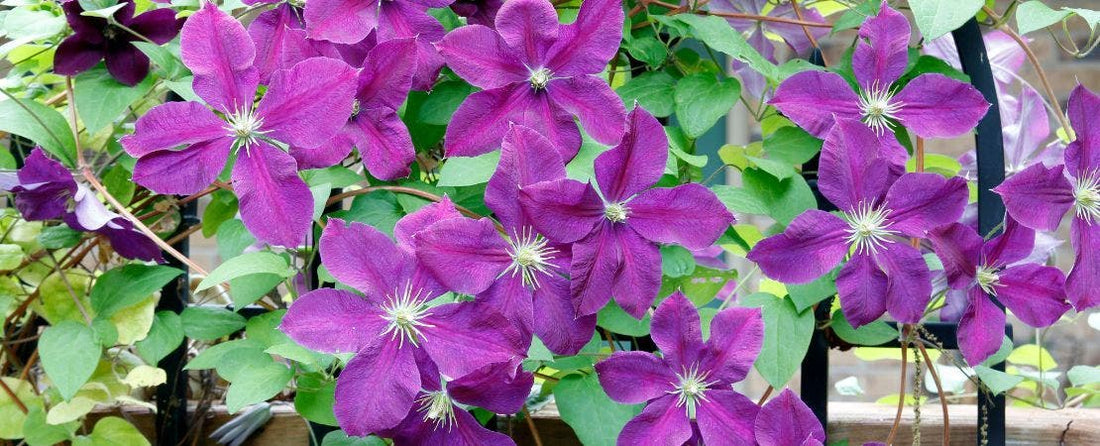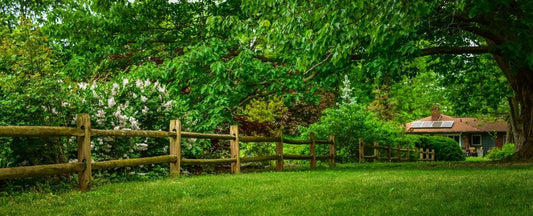Clematis Care Guide

Comprehensive Care Guide for Clematis Plants
Clematis vines, with their enchanting flowers and vigorous growth, can be a striking addition to your garden. Understanding how to care for clematis will ensure these beautiful plants thrive for years. We’ll guide you through the essential steps of choosing, planting, and maintaining clematis vines, ensuring they become a cherished part of your garden landscape.
Planting Your Clematis
Ideal Conditions: Clematis thrives in rich, loose, well-drained soil enriched with organic matter. These vines prefer their roots in cool, shaded conditions—achieved by low-growing plants or a layer of mulch—and their foliage in the sun. This unique preference makes clematis ideal for interplanting among roses, trees, and shrubs, providing a stunning vertical element for your garden and privacy for your outdoor living space.
Planting Steps
Spacing: Upon receiving your clematis, plant it immediately, allowing ample space for its ultimate growth and spread.
Support: Place a stake, trellis, or arbor next to the plant at planting time to support its climbing habit. Choose a support structure with rungs or lattice in a gauge not more than one-half inch thick and gaps not more than six-inches apart. This will allow the delicate tendrils to make contact and easily wrap around the trellis to hold the stems in place.
Root and Top Balance: Remember, clematis plants may show slow top growth initially as the roots establish themselves. Patience during this phase is crucial.
Care of a Clematis
Watering: Regular watering during periods of drought is essential for maintaining healthy clematis plants. However, avoid waterlogging to prevent root diseases.
Pruning: Understanding the pruning needs of your clematis is key to promoting vigorous growth and abundant blooms. Clematis can be categorized into three groups based on their blooming time and pruning requirements:
- Group 1:Blooms in spring on last season's growth. Prune lightly after flowering to shape and remove dead or weak stems.
- Group 2:Features early summer blooms on short stems from the previous season's growth. In March, prune dead wood and cut back remaining stems to a strong set of buds.
- Group 3:Blooms on new growth. Prune all stems back to 12 inches above ground level each March to encourage fresh growth and more blooms.
Mulching and Feeding: Apply a winter mulch to protect the roots and maintain soil moisture. Enhance soil fertility with a top-dressing of well-aged manure or rich compost, preferably twice a year, to support robust growth and flowering.
Zones: Clematis varieties are available for a wide range of climatic zones, so check the product details. With the exceptional variety at Wayside Gardens, you’re virtually ensured that there's a clematis for your garden setting.


